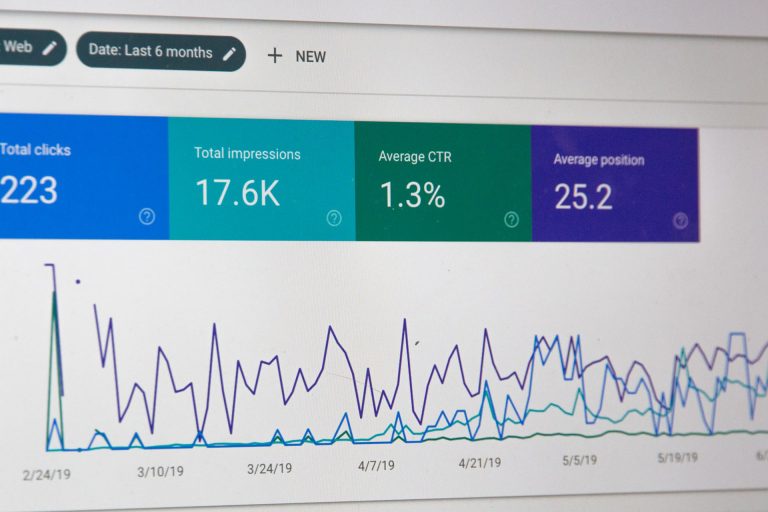Emerging Trends in Digital Marketing for 2021
2021 heralds the further rise of tech-driven consumer centric digital marketing; shifting the B2C relationship will rely even more heavily on deeper, personalised engagement. Every year, we see social platforms rise and fall – from “Facebook is dead!” to “Facebook is the only way forward!” and these predictions are rarely helpful. Instead, lets focus on emerging technology and assess the benefits vs. risks so that you can decide which approaches are best for your business. Google and other search engines already penalise sites that aren’t mobile optimised, however many business owners who have a mobile optimised site don’t consider optimisation of their video content.
If your website and your marketing & digital strategies at large fail to consider the role of mobile optimisation, your website may still be penalised in SERPs. This year, mobile consumption of video is anticipated to grow by 25-35% and, for the first time ever, video consumption on desktop devices is anticipated to decline… so now, more than ever, is the right time to ensure that your video content is optimised for mobile views (and of course, engagement). Live video viewership is also set to increase in uptake this year… Facebook Live is ranked as one of the most beneficial digital tools for customer engagement in the eyes of small businesses.

Here are our predictions for the shifting Digital Marketing landscape in 2021:
Mobile video and live video consumption will (continue to) grow.
However, like everything, ensure that your live video efforts are backed by a cohesive digital strategy. After all, engaging with your customers in any capacity is great – but becomes even more powerful when purpose-led. Live video also presents the need for a clear risk management strategy (since live video is viewed in real time and cannot be edited in any way – say, for instance, if an employee says something that they shouldn’t in a live stream or you accidentally give a sneak peek of an unreleased product – but can be recorded and screenshot by your audience). Many brands have already fallen victim to backlash and embarrassment with live video mishaps, so ensure you have risk management policies in place for this emerging technology.
2. Voice search optimisation will be a growing trend.
If you’re like many Australians, you may now be utilising a smart devices and voice technology, eg. home voice assistant (such a Google Home) in your day to day routine. It’s estimated that by 2021, up to 50% of all searches will be voice searches. Optimising for voice search includes conversational phrases and long-tail keywords… so if your site is primarily optimised for short-tail keywords, you may find your business not ranking too well. Tip: a great content marketing strategy will help make optimising for voice search easier. We’ve also provided some useful advice on how smart devices and voice technology can accelerate your business to help you get started.
3. Hyperlocalisation will go mainstream.
The digital realm makes it easier than ever before for local businesses to interact with potential consumers. From mid-2016, we started seeing Google Posts rolled out to all businesses and in 2017, Facebook Local gave more consumers a more localised social platform, with local services ads making it effortless for businesses to prove their trustworthiness. A local focus in search and social results is a fantastic step forward in giving local businesses the opportunity to compete with big brands for consumer attention share… however the downside is that many consumers are growing wary of seeing obvious advertisements on their feeds.
A consumer movement away from following brands and businesses on social media is beginning and with consumers being increasingly selective about who they reward with their online engagement, it’s crucial for brands to compete for attention and engagement in meaningful, value-adding ways. This means being genuine, authentic and above all, letting your business strategy guide your direction.
With obvious sales tactics online now being irrelevant and ineffective, we’re starting to see a divide in brand reputation online, heralding the removal of ‘mediocre’. Simply put, brands are either flourishing or failing online. The middle is dead, and we don’t predict it resurrecting anytime soon… so now is the time to make sure that your business is not in the latter category.
4. Transparency and trust become more and more crucial.
Trust, as we know, is king… and in 2021, online transparency and its impact on consumer trust is going to be more influential than ever before. Reviews (on Facebook, Google+ and third party review platforms such as Trust Pilot, in particular) are contributing more and more to Social Signals and Brand Signals, thus impacting how you rank in search engines. Algorithms are becoming smarter at also detecting true engagement – positive reviews vs. negative reviews, sporadic and meaningless engagement vs. true conversations and follow ups… all of this is taken into account in your Social and Brand Signals.
Look around you in your competitor landscape… you’ll see more and more businesses engaging in deliberate acts of online transparency in a bid to garner the trust of their clients. Now is the time to fully realise the potential of your online marketing strategy, show your business’ humanity and provide true transparency (rather than performative transparency). Those who do will be rewarded!
5. User experience is crucial (and always will be).
‘Customer experience marketing,’ as it is being dubbed in 2021 is really user experience marketing in disguise… this is nothing new and nothing revolutionary, yet few businesses are doing it well. Sadly, the trendy buzzword focus of ‘customer experience marketing’ means that in 2021, we still probably will not see the bulk of businesses excelling in this area – but this presents an opportunity for your business to stand out from the crowd by thoroughly considering user experience mapping, experience funnels and customer lifecycles in your overall marketing plan.
Customer and user experience is crucial – and this will always remain, regardless of the technological shifts that the years bring. As we’ve discussed previously, customers view your business as the total sum of the experiences that they’ve had with you (big or small) and creating exceptional brand experiences is key to retaining and creating true brand loyalty/championship.
6. Marketing activities with (need to) be better integrated into consumer lifecycles.
Marketing is becoming more complex and interlinked within the greater structure of an organisation – and this is a good thing! Customer journey mapping is now integral to a businesses success and these differing personas play a vital role in defining the best, most effective and most relevant customer communication for varying touchpoints in the consumer journey.
Lifecycle marketing allows your business to create a managed communications strategy that prioritises the appropriate communication channels for your ideal customers, identifies waste in your processes and thereby, increase overall efficiency and profitability.
This, again, is where personalisation and localisation can be integrated into the process of communications and customer experience (to increase positive sentiment and response/uptake).
7. In-stream social ads will eclipse the results of traditional TVC’s.
With television series exclusivity (for instance Netflix and Hulu, who each have exclusive shows only available on their respective platforms) and the rise of mobile video viewership, this means a big shakeup for traditional television and the success of TVCs. Since social advertising is now more readily available and popular than ever before (although its success is largely industry dependent and it isn’t always suitable for all businesses), we’re seeing a rise of social advertising integrating into digital series.
The future of television advertising is uncertain… but here’s what we do know: with more and more migration to digital advertising, smart businesses will leverage these opportunities to their advantage. Of course, not all businesses will have digital television audience overlaps in a natural way – but for those that do, it could mean the potential to craft the appearance of a big brand on a significantly lower budget than would be necessary to break into traditional TVCs – with much greater measurability.
So, where does this leave your business?
Which trends will you capitalise on, and how will you best invest your marketing budget? As always: Clearly map out your customer avatars & personas (both current and ideal, if they differ); Understand the customer journey; Be more than just a product or service… understand the essence of your brand; and have a clear, cohesive and thorough business/brand strategy that can then be replicated in your digital marketing strategy. Here’s to your success in 2021.







